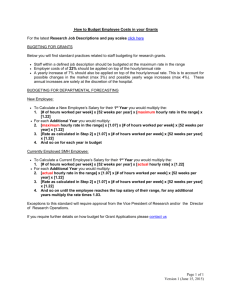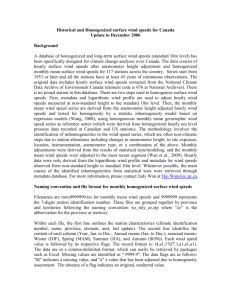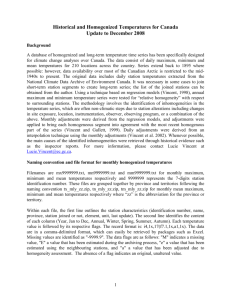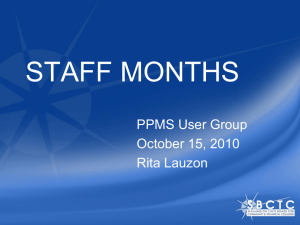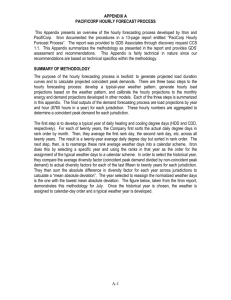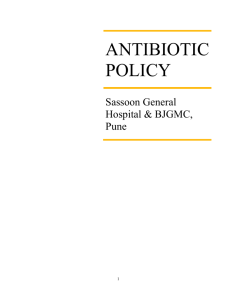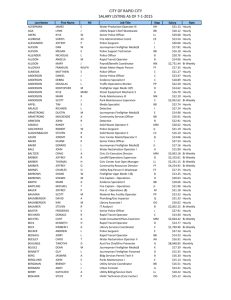Historical and Homogenized surface wind speeds for
advertisement
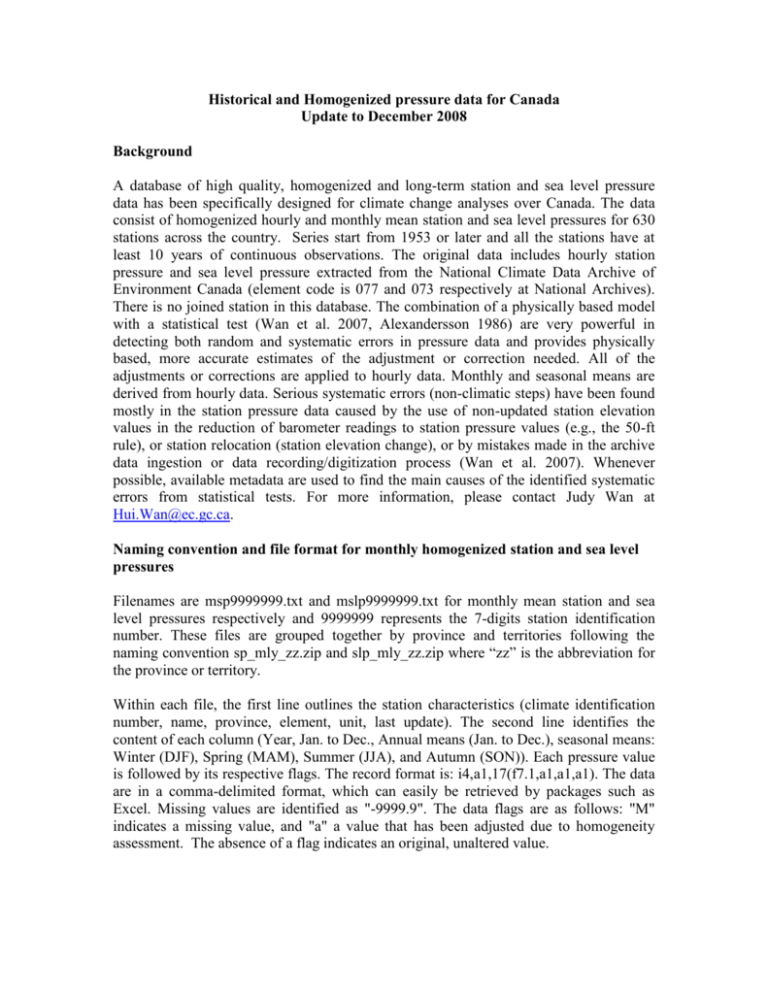
Historical and Homogenized pressure data for Canada Update to December 2008 Background A database of high quality, homogenized and long-term station and sea level pressure data has been specifically designed for climate change analyses over Canada. The data consist of homogenized hourly and monthly mean station and sea level pressures for 630 stations across the country. Series start from 1953 or later and all the stations have at least 10 years of continuous observations. The original data includes hourly station pressure and sea level pressure extracted from the National Climate Data Archive of Environment Canada (element code is 077 and 073 respectively at National Archives). There is no joined station in this database. The combination of a physically based model with a statistical test (Wan et al. 2007, Alexandersson 1986) are very powerful in detecting both random and systematic errors in pressure data and provides physically based, more accurate estimates of the adjustment or correction needed. All of the adjustments or corrections are applied to hourly data. Monthly and seasonal means are derived from hourly data. Serious systematic errors (non-climatic steps) have been found mostly in the station pressure data caused by the use of non-updated station elevation values in the reduction of barometer readings to station pressure values (e.g., the 50-ft rule), or station relocation (station elevation change), or by mistakes made in the archive data ingestion or data recording/digitization process (Wan et al. 2007). Whenever possible, available metadata are used to find the main causes of the identified systematic errors from statistical tests. For more information, please contact Judy Wan at Hui.Wan@ec.gc.ca. Naming convention and file format for monthly homogenized station and sea level pressures Filenames are msp9999999.txt and mslp9999999.txt for monthly mean station and sea level pressures respectively and 9999999 represents the 7-digits station identification number. These files are grouped together by province and territories following the naming convention sp_mly_zz.zip and slp_mly_zz.zip where “zz” is the abbreviation for the province or territory. Within each file, the first line outlines the station characteristics (climate identification number, name, province, element, unit, last update). The second line identifies the content of each column (Year, Jan. to Dec., Annual means (Jan. to Dec.), seasonal means: Winter (DJF), Spring (MAM), Summer (JJA), and Autumn (SON)). Each pressure value is followed by its respective flags. The record format is: i4,a1,17(f7.1,a1,a1,a1). The data are in a comma-delimited format, which can easily be retrieved by packages such as Excel. Missing values are identified as "-9999.9". The data flags are as follows: "M" indicates a missing value, and "a" a value that has been adjusted due to homogeneity assessment. The absence of a flag indicates an original, unaltered value. Naming convention and file format for hourly homogenized station and sea level pressures Filenames are hsp9999999.txt and hslp9999999.txt for hourly station and sea level pressures respectively and 9999999 represents the 7-digits station identification number. These files are grouped together by province and territories following the naming convention sp_hly_zz.zip and slp_hly_zz.zip where “zz” is the abbreviation for the province or territory. Within each file, the first line outlines the station characteristics (climate identification number, name, province, element, unit, last update). The second line identifies the content of each column with the data appear as year, month and day followed by 24 hourly values (the 24 entries represent the observations taken on the hours 00-23 at local standard time) with their flags. The record format is i4,2(i4),24(f7.1,a1). Missing values are identified by "-9999.9". The data flags are as follows: "M" indicates a missing value, “W” a possible erroneous/wrong value (no correction) and "a" a value that has been adjusted due to systematic errors. The absence of a flag with any datum indicates an original and unaltered value. REFERENCES Alexandersson, H., 1986: A homogeneity test applied to precipitation data. J. climatol., 6, 661-675. Wan, H., X. L. Wang, V. R. Swail, 2007: A quality assurance system for Canadian hourly pressure data. J. Appl. Meteor. Climatol., 46, 1804-1817.
